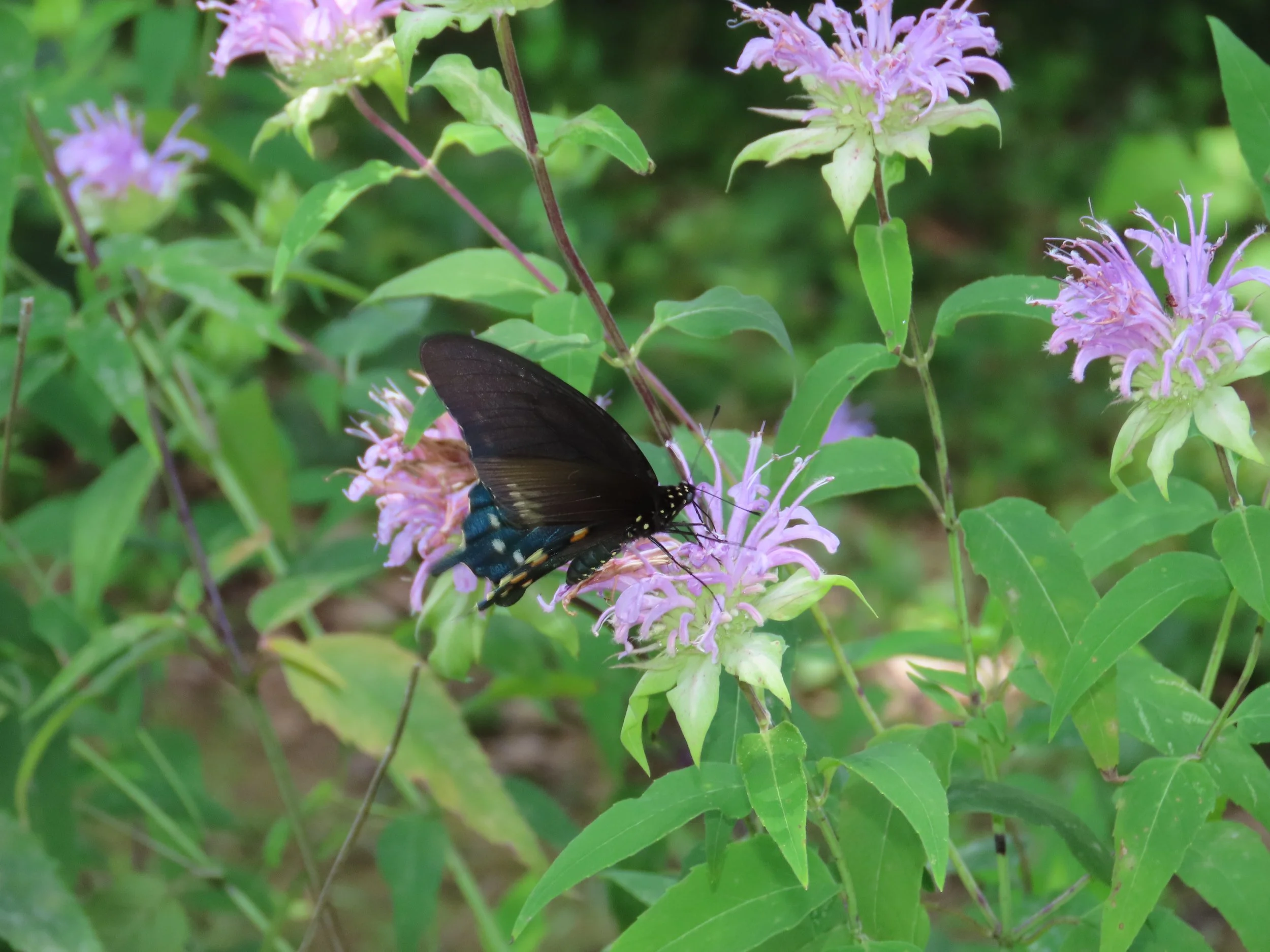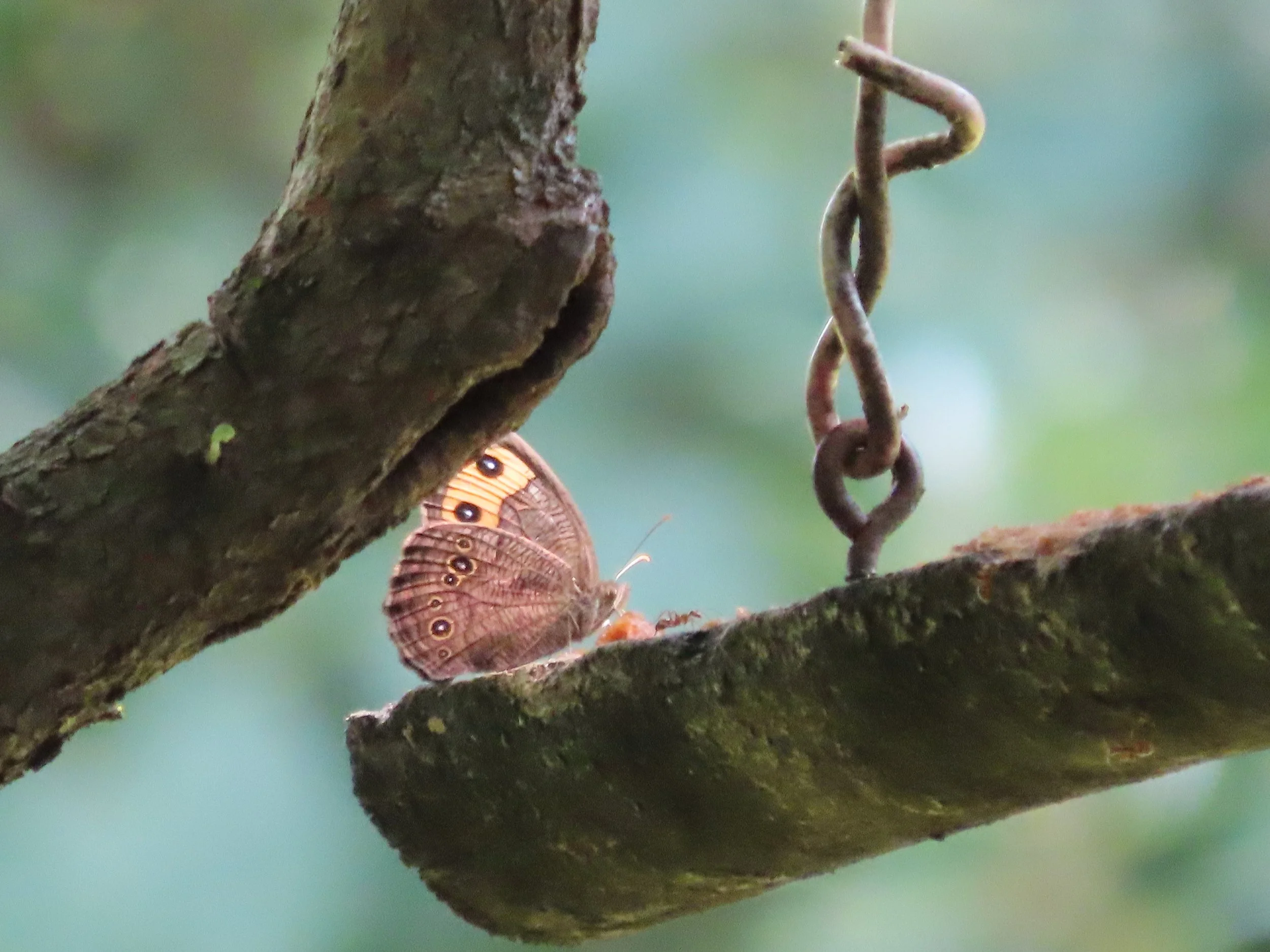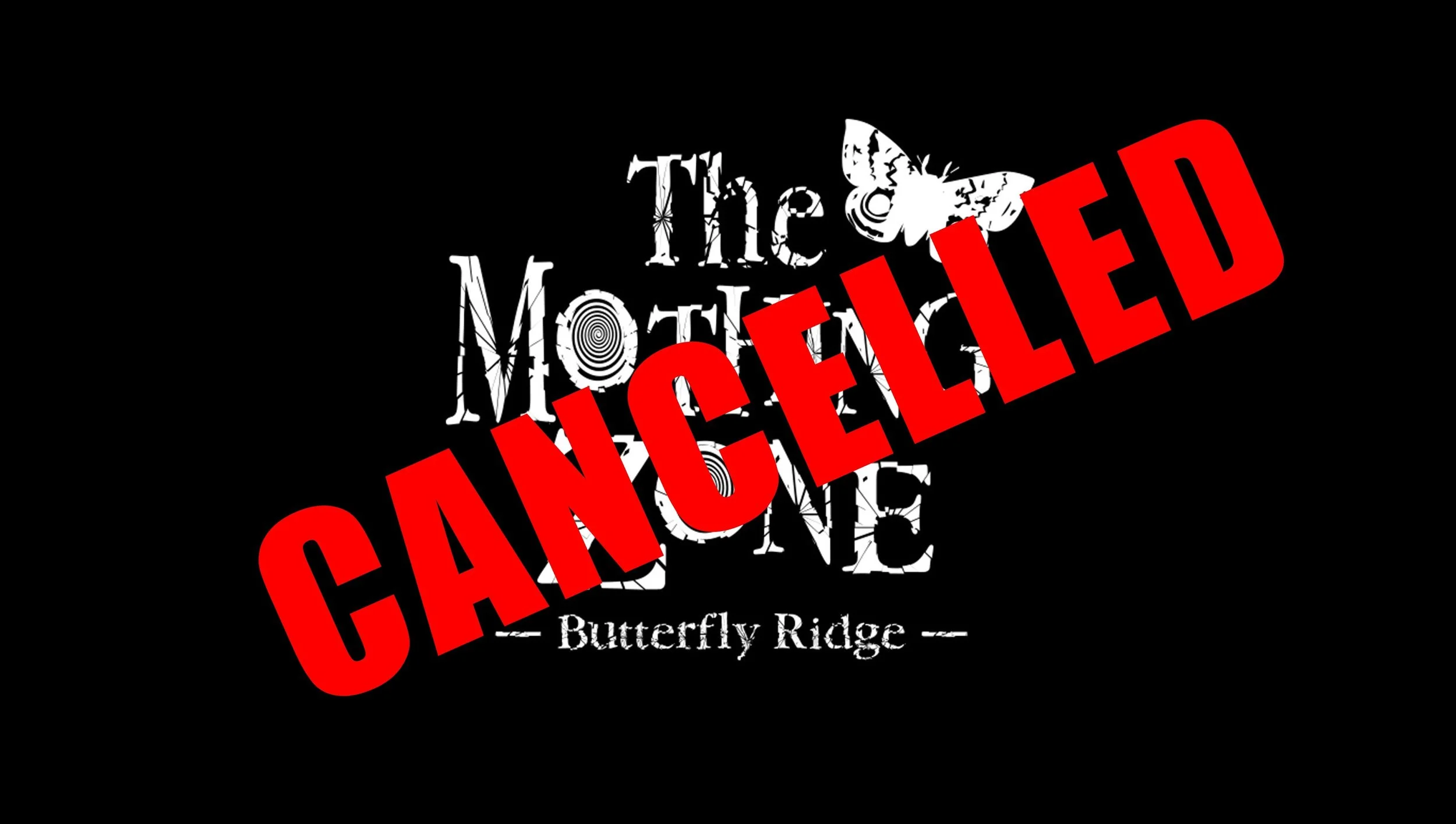Now You See Them, Now You Don't
/We are entering the time of year in which some of our visitors will see lots of butterflies and other visitors on the trail at the same time will see none. So I want to spend some time discussing the variables that impact how many butterflies folks may see, and how many of those variables are in Butterfly Ridge’s control, and how many are not.
Wild Bergamot is an excellent nectar plant. The proof is in the fluttering.
First of all, what is in Butterfly Ridge’s control? The plants. Since 2015 we have planted over 7000 plants, which does not count seeds that were directly sown into praries and beds. Those plants include a variety of nectar plants and caterpillar host plants. Currently the nectar plants blooming throughout the property include orange Butterfly Weed, purple Bergamot, pink Purple Coneflower, white Mountain Mint, red Cardinal Flower, and others. And let me remind you nothing gets planted at Butterfly Ridge because it is pretty, so all of those listed above are proven in their use by pollinators.
Also among those thousands of plants are caterpillar host plants. These plants you may not notice, as many are not especially showy, but they serve an important purpose none the less. Among the host plants are Bush Clovers (Southern Cloudywing), Butterfly Weed and Common Milkweed (Monarchs), Wingstem (Silvery Checkerspot), Heath and New England Asters (Pearl Crescent), False Nettle (Red Admiral), Sweet Everlasting (American Lady), and grasses, lots and lots of grasses (Grass Skippers and Common Wood Nymph).
The list of things out of our control is conserably longer. Here are a few.
Predation - The caterpillars, butterflies, and moths that we try to nurture here at Butterfly Ridge are also food for other critters. Bats, birds, spiders, stink bugs, tachinid flies, and mantids all consume lepidoptera in various stages of the life cycle. As example, most summers, our Catalpa trees are completely defoliated by Catalpa Sphinx moth caterpillars. These are large trees. One would think that with that many caterpillars our mothing sheets would be packed at night with Catalpa Sphinx moths. Truth be told, in a normal summer we see maybe 6-8 Catalpa Sphinx adults, for the entire season. There is a lot of predation out there.
Timing - Two days ago I placed the GoPro camera next to the Cardinal Flower in our wetland and let it run for two hours. During that two hours a single hummingbird visited the plants for about thirty seconds. A visitor standing next to the Cardinal Flower for that thirty seconds would think we had a solid hummingbird population. A visitor standing there for the other 119 minutes would think we had no hummingbirds at all. This is why we suggest to our visitors that they backtrack through the habitats, confident that activity will have changed between the two passes. We also suggest visitors sit and hang-out on our benches for awhile, so they can better observe the “changing of the guard”.
Weather - In the past twelve months we have experienced prolonged drought, multiple bouts of prolonged heat, and what seemed like rain that would never end. All of this takes a toll on our pollinators. Many of our late season Tiger Swallowtail caterpillars surely perished last summer from lack of food during the drought. Our tuliptrees, of which we have many, were turning yellow and dropping leaves long before the normal fall color season in October. Dead caterpillars in the fall means fewer Tiger Swallowtail adults in the spring. And fewer adults in the spring means fewer adults in the summer.
butterflies can hide in plain sight.
Observation skills of our visitors - I specifically remember an experience in 2023 in which myself and our interns were conducting a transect at the same time as a family was walking the trail. My interns and I returned back to the nature center just a few minutes before the family did. Our transect had counted over 90 butterflies. Our visitors had observed two. How did our visitors miss the other 90 butterflies? I don’t know. I think a lot of folks have never been trained in outdoor observation techniques. I also think our tropical butterfly conservatories throughout the country have spoon-fed people butterfly experiences such that they now expect that from nature as well. To combat this, we encourage our online followers to watch the Butterflynding video on our YouTube channel. We also try to give our visitors a quick butterfly observation tutorial when they pay admission in our gift shop. Unfortunately, many of our visitors make it very clear verbally and through body language that the tutorial is not welcomed.
As you can see, we do the best we can to create a pleasant and fun experience for our visitors, but we can only do so much. We need visitors to put some effort into their experience and we need the weather to cooperate. Over the past 12 months, the latter has been in short supply and visitors . . . that’s sort of up to them. Our hope is that our visitors will enjoy their walk at Butterfly Ridge, even if the butterflies are in short supply, because there will be plenty of others things that will be plentiful!












